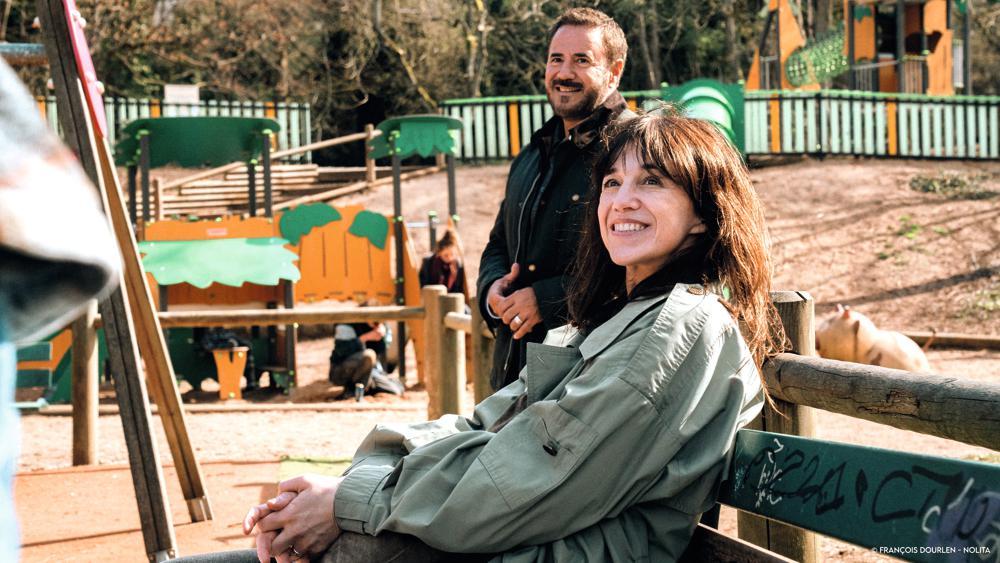Winter solstice 2021: The shortest day of the year is imminent
Created: 12/20/2021, 1:15 PM
From: Joseph Scheppach
Winter is considered the dark season.
But soon there will be consolation ... © MiS / imago-images
The winter solstice is something very special: the shortest day and the longest night.
But while this date marks the beginning of winter in the calendar, meteorologists, of all people, do not adhere to it.
Munich - December 21st has been celebrated for thousands of years - in places of worship such as Stonehage in southern England or the striking sandstone rock formation (Externsteinen) in the Teutoburg Forest.
This is the winter solstice day: the shortest day and the longest night of the year.
At the winter solstice * the earth on its orbit around the sun has reached the point at which the northern hemisphere turns more towards the sun again.
That happens exactly at 4:58 pm.
From now on the days are getting longer.
Winter solstice: Why does the German Weather Service start winter much earlier?
Because the astronomical winter begins at the same time as the shortest day of the year, the days do not get shorter in winter, but more light comes into the darkness.
For meteorologists, however, winter begins as early as December 1st - for statistical reasons that stem from times without a computer.
If you put the beginning of winter at the beginning of a month, it is easier to determine “for example monthly averages, monthly sums, monthly deviations, extreme values”, according to the German Weather Service on its website.
Winter solstice: why are the days different?
After the sun is so flat above the horizon at the winter solstice as never before in the year, it is now getting brighter - even if initially only for a few seconds.
You can only feel the longer days in the afternoons at first.
Because until the beginning of January the sun rises a little later in the morning, but sets later in the afternoon.
Follow the earth's slightly flattened, elliptical orbit around the sun.
The following applies: the further north the place, the shorter the day.
The difference between Hamburg and Munich is almost an hour.
With the flatter course of the sun, less heat reaches the earth's surface - it cools down slowly, although the lowest temperatures are usually only measured with a delay in January / February.
Winter solstice: Why are there three different beginnings of winter?
In addition to the astronomical and meteorological beginning of winter, there is also the phenological beginning of winter.
It is not tied to fixed dates.
Phenological periods of the year are determined by observations of nature.
For example, when snowdrops sprout, early spring beckons and when the black elderberries ripen, it's time to say goodbye to summer.
The flowering, fruit ripening, leaf color or leaf shedding of certain types of plants - so-called pointer plants - each mark the beginning of a new phase of the year.
Winter solstice: why did our ancestors speak of “mother's night”?
The winter solstice never left people indifferent.
So great was the joy of a new sun that rises in the east in the morning, as it were, from mother earth that our ancestors spoke of "mother's night".
And the Christians also had a special name for the winter solstice: Thomas Night - in memory of the Apostle Thomas.
* Merkur.de is an offer from IPPEN.MEDIA.
Rauhnächte: Danish people, talking animals and "dead days"
Evil spirits go on wild hunts, animals oracles, unmarried women magically find their bridegroom and those who hang up laundry risk their lives.
The 12 days after the winter solstice were already considered shrouded in myths in pre-Christian times.
The time "between the years" is called Rauhnächte.
“Rauh” does not mean the cold nights, rather the term “smoke” is derived from what used to mean hairy and furry. Our ancestors used it to describe the so-called Perchten: fear-inducing figures draped with furs and intended to drive away evil spirits. As a shaggy “Percht”, this figure lives on in Bavarian-Austrian alpine customs, where demons are chased away during Perchten runs - and the winter is also “driven out”. Even today houses and stables are consecrated in the Rauhnächten to ward off ghosts and to ask for blessings.
Our ancestors also had the opportunity to consult oracles on these nights. Animals in the barn can then be heard talking at the “witching hour” and something about the future can be extracted from them. Midnight is also the best time for maids to go to a magical place. There they could see their future bridegroom - but should not speak to him. That would mean death. Those who wash and hang laundry during the rough nights are also threatened by hardship and death. They would be stolen by wild riders and used as shrouds.
By the way: Why one speaks of a time “between the years” during the Rauhnächten has to do with a gap between the Germanic lunar calendar and the course of the year of the sun.
The lunar year with its 12 moons is only 354 days long.
The solar year is missing 11 days - or 12 nights.
They were simply inserted as “dead days”.








